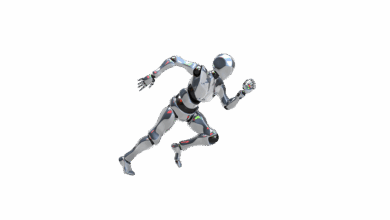The Long Arm of History: Unpacking the Recent Recovery

Imagine, for a moment, the whisper of history carried on the desert winds, the echoes of pharaohs, scribes, and artisans resounding through millennia. Ancient Egypt holds an undeniable, almost mythical, allure, drawing countless admirers to its timeless treasures. Yet, this fascination has a darker counterpart: the illicit trade in antiquities, a shadowy world that has, for centuries, stripped nations of their irreplaceable cultural heritage. But every so often, a story emerges that brightens this somber narrative, a triumph of cultural preservation over exploitation.
Recently, Egypt celebrated one such victory, a significant milestone in its ongoing national efforts to reclaim its past. A collection of 36 precious Egyptian antiquities, which had illegally made their way to the United States, has finally returned home. This isn’t just about artifacts; it’s about the tangible pieces of a civilization’s soul finding their way back to where they belong, a powerful testament to global cooperation and a nation’s unyielding resolve.
The Long Arm of History: Unpacking the Recent Recovery
The announcement by the Ministry of Foreign Affairs and Emigration and Egyptian Expatriates Affairs on November 6th marked a pivotal moment. The 36 recovered Egyptian antiquities, retrieved from the State of New York, represent not just a collection of objects, but fragments of a story, each with its own journey, both ancient and illicit. This particular recovery highlights the intricate dance between international law enforcement, diplomatic efforts, and a growing global consciousness about cultural property.
It’s a stark reminder that the battle against art trafficking is complex, often involving intricate networks and sophisticated smuggling operations. Yet, with each successful repatriation, a clear message is sent: these treasures are not commodities to be traded but legacies to be protected.
A Closer Look at the Treasures Returned
The diversity of the recovered items alone tells a compelling story, spanning different eras and contexts of ancient Egypt. The collection comprises three distinct sets, each with its own tale of recovery:
- The First Collection: 11 Confiscated Artifacts. These pieces were seized by the vigilant Office of the District Attorney of New York, a crucial partner in the fight against illicit trade. Their confiscation and subsequent handover to the Egyptian Consulate General in New York underscore the legal commitment of international partners to uphold cultural heritage laws. These are likely items intercepted from smugglers or illegal dealers, preventing them from disappearing further into private collections.
- The Second Collection: 24 Rare Coptic and Syriac Manuscripts. This batch holds immense historical and religious significance. Manuscripts, especially those in Coptic and Syriac, offer invaluable insights into early Christianity in Egypt and the broader Middle East, providing direct windows into ancient languages, spiritual practices, and daily life. Their recovery is a particular boon for scholars and religious communities alike, enriching our understanding of this rich period.
- The Third Collection: A Painted Relief from the 18th Pharaonic Dynasty. This piece holds a special place, as it was voluntarily returned by none other than the Metropolitan Museum of Art in New York. The 18th Dynasty, encompassing iconic figures like Akhenaten, Tutankhamun, and Hatshepsut, represents a pinnacle of ancient Egyptian art and power. The Met’s decision to return this relief signals a significant shift in the attitudes of major cultural institutions, moving towards ethical stewardship and collaboration rather than mere acquisition. It’s a testament to the growing global consensus that context and provenance matter deeply.
More Than Just Objects: The Deeper Meaning of Repatriation
Why do these recoveries matter so profoundly? It’s a question that goes far beyond the monetary value of the pieces themselves. For Egypt, and indeed for any nation, the return of its cultural heritage is about reclaiming identity, restoring integrity, and affirming a connection to its past that has been forcibly severed.
Firstly, these artifacts are not mere decorative items; they are the tangible threads of a nation’s cultural DNA. For Egyptians, they are living links to their ancestors, stories etched in stone, papyrus, and paint that speak of ingenuity, spirituality, and a sophisticated civilization. Their rightful place is within Egypt, where they can be appreciated by the descendants of those who created them, fostering a sense of national pride and continuity.
Secondly, repatriation restores historical integrity. When an artifact is removed from its original context, its story becomes incomplete, its significance diminished. Scholars rely on the provenance and archaeological context of objects to truly understand their meaning. The return of these pieces allows them to be studied, displayed, and interpreted within their cultural landscape, enriching global knowledge and appreciation for ancient Egypt.
Finally, and perhaps most crucially, every successful repatriation strikes a blow against the illicit antiquities trade. This nefarious industry fuels organized crime, funds conflict, and destroys archaeological sites. By demonstrating that stolen heritage will eventually be pursued and returned, these efforts help to de-incentivize future looting and trafficking. It sends a powerful message that the international community values cultural preservation over illicit profit.
Egypt’s Renewed Resolve: A Global Call to Action
This recent success isn’t an isolated incident; it’s part of a broader, intensified strategy by Egypt. Following the long-awaited opening of the Grand Egyptian Museum (GEM), a monumental feat of modern architecture and curatorial vision, Egypt has amplified its global calls for the return of its looted antiquities. The GEM stands not just as a museum, but as a symbolic home, a state-of-the-art facility ready and eager to house its nation’s treasures.
The timing is no coincidence. With a world-class institution now welcoming visitors, Egypt can confidently assert its capacity to properly conserve, study, and display its heritage. This legitimizes its demands on the international stage, urging museums, private collectors, and governments worldwide to cooperate in restoring what was lost. The message is clear: the era of acquiring artifacts without proper provenance is over, and the time for restitution has arrived.
Moreover, this concerted effort signals a broader shift in international relations concerning cultural property. It showcases effective collaboration between diplomatic channels, legal entities like the New York District Attorney’s office, and even the evolving conscience of established institutions like the Metropolitan Museum of Art. These partnerships are crucial, demonstrating that cultural heritage is a shared global responsibility, even as it remains intrinsically linked to its place of origin.
The recovery of these 36 Egyptian antiquities from the United States is more than just a news item; it’s a profound victory. It’s a testament to unwavering determination, effective diplomacy, and a growing global commitment to ethical cultural stewardship. Each piece returned is a fragment of history reconnected, a silenced story given voice once more. As Egypt continues its mission to reclaim its heritage, these successes serve as powerful reminders that while the sands of time may shift, the call of cultural identity remains eternally strong, guiding these priceless treasures back home.





